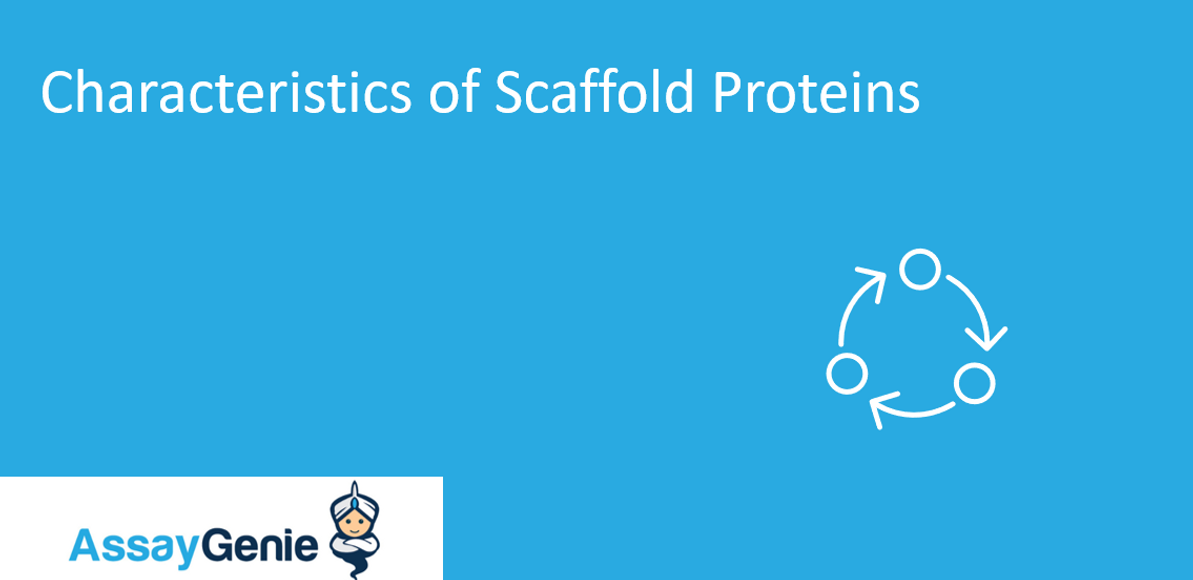Characteristics of scaffold protein
Scaffold Proteins
Environmental stimuli result in different biological responses including cell growth, proliferation or apoptosis. How cells translate specific stimuli into a specific cellular response is not well understood. Scaffold proteins are evolutionarily conserved proteins that play important roles in coordinating signalling events in eukaryotic cells. These proteins, conserved through evolution, serve as essential organizers, helping cells translate external cues into specific actions. This blog post delves into the practical world of scaffold proteins, exploring their fundamental functions and shedding light on how they influence cellular signaling pathways.
Key Takeaways
Scaffold Protein Function
Scaffold proteins have a clear and crucial job: they help coordinate various cellular activities by interacting with signaling pathway components. Due to the absent of enzymatic activity, to test whether a protein is scaffolding a particular pathway we must increase the amount of the scaffold protein and look at the output activity of the cell signalling pathway. Here's a breakdown of their functions:
- Guiding Spatial Arrangement: Scaffold proteins direct the components of a signaling pathway to specific cellular locations, ensuring efficient and targeted signaling events. This spatial arrangement minimizes confusion and ensures accurate communication within the cell.
- Protection against Phosphatases: An important role of scaffold proteins is to shield cell signaling pathways from the effects of phosphatases, enzymes that deactivate signaling molecules. By providing a protective environment, scaffold proteins ensure that signaling responses remain robust.
- Boosting Efficiency: Scaffold proteins act like organizers, bringing together different parts of a signaling pathway into a unified complex. This streamlined setup enhances the efficiency of signaling, allowing cells to respond more effectively to external cues.
- Coordination and Compartmentalization: Scaffold proteins act as coordinators, facilitating protein interactions within cells. By providing a platform for these interactions, scaffold proteins compartmentalize and synchronize cellular signaling, maintaining the integrity of the processes.
- Fine-Tuning with Concentration: Activation of signalling pathways by scaffold proteins induces a bell shaped curve activation. Scaffold proteins follow a concentration-dependent principle. The right amount of scaffold is essential for optimal cellular responses. Too much or too little can disrupt the signaling balance and affect the overall outcome. Too little scaffold causes the signal to be low and too high scaffold concentration cause binding partners to be titrated away from one another, thus decreasing the signal output
- Scaffold Proteins: Guardians of the MAPK Pathway: The significance of scaffold proteins is evident in studies of proteins like Ste5 in yeast and KSR1 in mammals. Ste5 regulates the MAPK pathway in yeast, while KSR1 in mammals assembles MAPK proteins, enhancing signaling efficiency.
Written by Rithika Suresh
Rithika Suresh completed her undergraduate degree in Biotechnology in Anna University before completing her masters in Biotechnology at University College Dublin.
Recent Posts
-
Inflammasome Activation Pathways: A Comprehensive Overview
Inflammasomes are complex intracellular structures that play a pivotal role in the immune respon …25th Apr 2024 -
Illuminating the Multifaceted Role of Acetylation: Bridging Chemistry and Biology Introduction:
Acetylation, a chemical process characterized by the addition of an acetyl functional group t …16th Apr 2024 -
Understanding IgA Test: Importance, Procedure, and Interpretation
The IgA test, also known as immunoglobulin A test, is a diagnostic tool used to measure the l …15th Apr 2024




